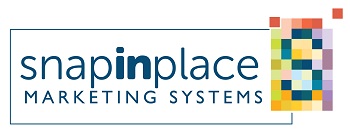Quality is never an accident; it is always the result of high intention, sincere effort, intelligent direction and skillful execution; it represents the wise choice of many alternatives.
— William A. Foster
 In my experience with launching B2B hosted applications, all Software-as-a-Service (SaaS) providers claim prowess in directing data from Point A to Point B.
In my experience with launching B2B hosted applications, all Software-as-a-Service (SaaS) providers claim prowess in directing data from Point A to Point B.
None voluntarily reveal an inherent flaw in this process: their inability to ensure that the right data indeed move from Point A to Point B. They leave that to the client and their partners to ensure. Call this a gap in data quality management.
In designing marketing automation solutions for my clients or employers I set down as the cornerstone to every marketing SaaS project one chief instrument for data quality control: a team or agency wholly dedicated to data quality management.
The Data Quality Management Hero
The data quality management team provides the marketing operation with a sophisticated service that minimizes data duplication, enhances data sets using third-party suppliers like Dunn & Bradstreet, and conducts manual data lookups in the Web, applying custom rules and exceptions to those rules on-demand to ensure that the best data indeed move from Point A to Point B through the marketing SaaS application, and is available for use in populating reports and dashboards.
In other words, this team is responsible for keeping the SaaS system trustworthy for end-users.
Under a cloud computing model I often select an existing partner to the marketing SaaS provider under consideration precisely because the SaaS provider cannot competently control the systems data quality. To the best of my knowledge, no SaaS provider plays today with exclusive strength in this data cleansing space.
And why should they? Its a specialty that other companies with far more expertise can deliver on.
SaaS providers basically answer any end-user question involving the capabilities in their software functionality by saying Yes. We can do that IF you have the data to give us. They simply dont tell how you are to secure that data and keep it reliable over time. Implicitly that is the users responsibility the moment you sign the subscription agreement. The subscriber owns the data, warts and all.
Integration And Data Management As The Tip Of The Iceberg…Not!
 But seen from this data perspective, SaaS providers need partners to empower their tool set. The partnerships also must go beyond being simply a community of on-demand data integration and cleansing software providers like Informatica, Business Objects or CRMfusion.
But seen from this data perspective, SaaS providers need partners to empower their tool set. The partnerships also must go beyond being simply a community of on-demand data integration and cleansing software providers like Informatica, Business Objects or CRMfusion.
Each partner must fit within the SaaS business model, meaning that somebody other than you, the SaaS subscriber, has to manage the configuration and maintenance of the Informatica Data Loader, the Business Objects FirstLogic or the CRMfusion OnDemand Tools software packs that support those pretty SaaS front-end windows (remember them from the demo?). And it is not the marketing SaaS provider who does this work.
A system integrator may help you kick start this process of data quality management, by configuring a tool set for you and initiating the processes that will run in the back-end to ensure that the functionality of your Eloqua, Silverpop, Aprimo, Marketo, Salesforce.com or whatever SaaS service you subscribe into becomes sustainable. But consider that not fine-tuning these processes over time is behind the rejection of many CRM systems.
In this case its not only that a CRM app might be difficult to navigate and use from a front-end perspective, but mainly that the user organization rejects the validity of the systems data. Period. Garbage in, garbage out. I guarantee you that any marketing SaaS would face the same shortcoming without a “washing machine” process running in the back-end. Just think of one simple scenario as follows.
Field Marketing organizes on premises events, such as conference shows and seminars. Because of it, the marketer comes to depend on producing list selections from a marketing database based on a radius distance from a metro area, say 30 miles from Dallas to target, for example, potential seminar attendees in that region. Who produces these GPS type of data? It wouldnt be the marketing SaaS system.
The SaaS would store the data and make it available for use in list selections. But somebody has to create that data. There is need for specialized software to do that with. It also has to be tinkered with depending on the type of data available to begin with. (Do you use zip code, SCFs, area codes, all of the above to create the radius? What do you use if youre building radii for European cities? How about Latin America or Asia Pacific?) Who would do all that data transformation and maintenance work? Again, it wont be the marketing SaaS provider.
This is why I hire specialists to produce some of these data and send it to a Marketing Master. Some data they produced on an on-going basis; some other they produce on-demand, because it is cheaper to deliver it as a one-time service than to pay for a permanent data acquisition. Either way, this data creation and management work must be done by data quality management specialists to make the SaaS tool useful and trustworthy.
This is the invisible iceberg beneath the SaaS viability surface. A new SaaS makes data delivery easier and more extensible, one would hope. But it is nonetheless 100% dependent on the data available in the back-end. The bells and whistles need someone to rattle and blow into them to make the party noise people expect. That “someone” is data the right kind in the right quality kept dependable over time. It is critical that the business subscribing into a hosted model of operations keep this clearly in mind.
Doing Without This Complexity? What To Expect Then.
A failure in data quality controls means, in short, that the long-term usefulness of the SaaS provision will become suspect, no matter how powerful a process automation engine the SaaS may represent for purposes of response nurturing, lead management, etc.
Furthermore, 90% of the work required to get a SaaS to become useful is back-end effort necessary to scale the data to the right level of quality and a program in place to keep it at that level over the long haul. Its an investment in an asset. There is no easy way around this.
But remember that once the SaaS is deemed useful, you have 50% of the tool adoption battle won. The other 50% is user behavior modification, i.e. the driving out of old habits to replace them with new practices. But at least with clean and reliable data in your new system, resistance to change will focus on how to exploit the applications features and not on knocking it for the poor information that the user will be pulling out of it.
Making data useful is neither easy nor cheap. This is why you need to hire specialists to apply techniques that no SaaS can do for you.
Return to Marketing Automation from How To Keep SaaS Data Quality From Sinking You
